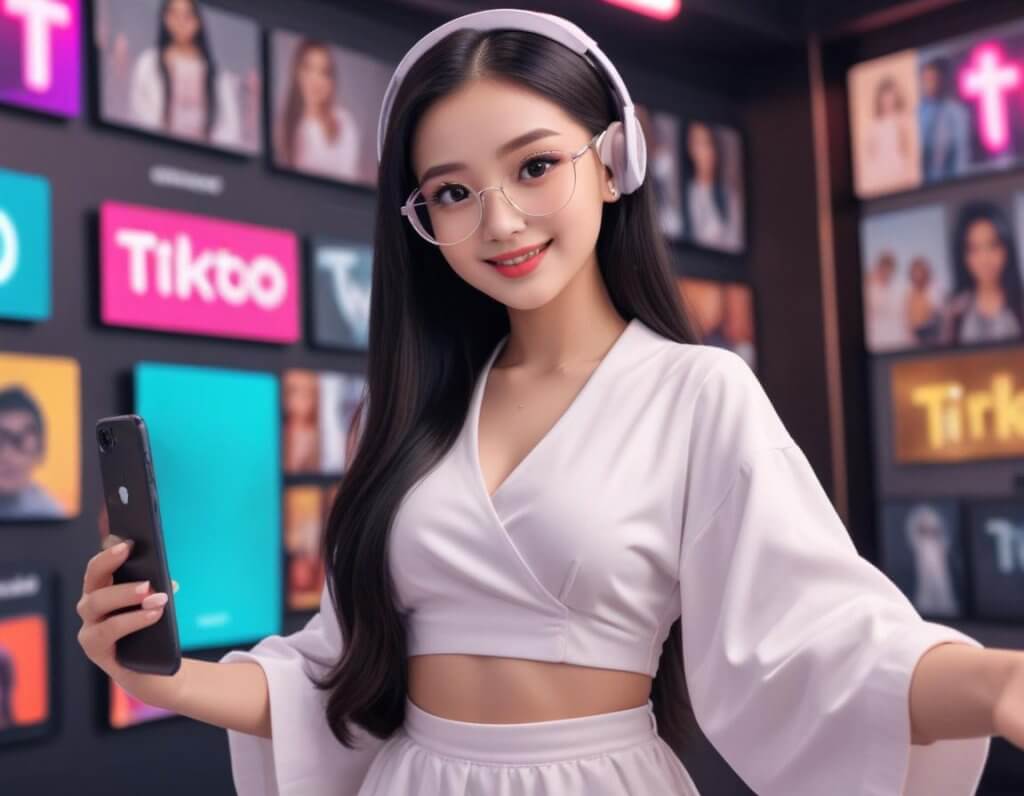How to Make Trending Reels, Shorts, and TikToks with AI: Step-by-Step Guide for 2025

Introduction: Why AI-Driven Short-Form Videos Are Taking Over Social Media
In the last few years, platforms like Instagram Reels, YouTube Shorts, and TikTok have exploded with short-form content. But in 2025, the game has evolved. The top-performing pages now use AI tools to create up to 70% of their viral videos. These videos aren’t just random clips—they are psychology-driven, visually immersive、そして emotionally resonant, designed to hook viewers in the first 3 seconds and keep them watching till the end.
In this guide, you’ll learn step-by-step how to create this exact style of content, including:
- AI scriptwriting from scientific sources
- Voiceovers with human-like emotions
- Sourcing B-roll and video assets with AI assistance
- Editing techniques using free tools like CapCut
- Optimization tips for virality and engagement
Step 1: Choose a Niche That Thrives in Short-Form Video
The first step is picking a niche that naturally performs well with emotional and engaging scripts. Some of the most viral niches include:
- Dark Psychology
- Subconscious Mind
- Body Language
- Masculinity & Philosophy
- Relationships & Hidden History
- Wealth & Motivation
These topics tend to evoke curiosity, surprise, and self-reflection—three of the strongest emotions that drive engagement on short-form video platforms.
Step 2: Gather Verified, Research-Based Information Using Google Scholar
Before writing any script, it’s critical to start with factual, credible data. You can use Google Scholar to find academic studies and peer-reviewed papers.
例
Search for terms like:
"dark psychology cheating""subconscious body language""emotional behavior in relationships"
Pick an article, extract the insights, and then use ChatGPT with the following prompt:
“Summarize the key findings of this article using short-form video storytelling tone. Keep it emotionally impactful and accurate.”
This will ensure your script is not only emotionally resonant but factually grounded—a critical edge in today’s algorithm-driven platforms.
Step 3: Use AI (ChatGPT) to Write a Viral Script Based on Real Data
Once you’ve selected a verified article, paste it into ChatGPT and prompt it to generate a script. To ensure virality:
- Keep it short (40–70 seconds max)
- Open with a bold emotional hook
- Structure the script around conflict and revelation
- Close with a memorable quote, question, or statement
Structure Example:
- Hook: “They didn’t accidentally cheat on you. Cheating isn’t clumsiness—it’s strategy.”
- Body: Explain the psychology behind the statement.
- Close: “They betrayed you the moment they started fantasizing about someone else.”
Using this storytelling format makes your videos highly shareable そして memorable.
Step 4: Download High-Performing Video Scripts for Style Inspiration
Study high-performing videos from accounts like Zolon (1.3M+ followers). Download their video scripts using tools like:
- Riverside.fm
- [YouTube transcript plugins]
- [Instagram link grabbers]
Feed those scripts into ChatGPT as references. Then, prompt it to mimic their rhythm, tone, and emotional pattern while preserving your own message.
Step 5: Generate AI Voiceovers That Convey Real Emotion
For voiceovers, robotic AI won’t cut it. Use Hume.AI — an emotional AI voice platform that can read and perform your script with realistic tone and pacing.
How to Use Hume AI:
- Create a free account.
- Choose a voice that fits your niche (deep, emotional, authoritative).
- Paste your script and generate the voice.
- Download the voiceover file.
Hume gives 10,000 characters free each month and allows you to audition dozens of voice types.
Step 6: Add Background Music That Matches Emotion
Music sets the tone. Use sources like:
Choose music based on the emotional intensity of your script:
- Introspective → Piano, ambient
- Dramatic → Epic or suspense scores
- Romantic or reflective → Chill lo-fi
Be sure to use music volume balancing and audio filters in your editor to avoid overpowering your voiceover.
Step 7: Collect Relevant B-Roll Using Pinterest and ChatGPT
The hardest part is visual B-roll. But with the right prompts, you can automate discovery.
Strategy:
- Ask ChatGPT to break your script into visual concepts.
- Use those keywords (e.g., dark surreal character, emotional couple breakup) on Pinterest.
- Filter results by video.
- Download assets using a Pinterest downloader.
Tip: Always credit creators when using public visuals.
Step 8: Edit Your Video Using CapCut (Free)
CapCut is the go-to editor for short-form content creators.
Basic Steps:
- Create a new project and import:
- AI voiceover
- Background music
- B-roll clips
- 使用 audio enhancement filters for clarity
- Add fade-in animations to captions and overlays
- Include a signature filter layer to create brand consistency
- Add vignette overlays for dramatic depth
Step 9: Generate and Customize Auto Captions
使用 CapCut’s Auto Captions to add engaging text overlays. Then customize:
- Font: Use bold, readable fonts (e.g., Thrive)
- Text Shadow: Add contrast
- Animations: Use subtle fade-ins (~0.2 seconds)
Captions aren’t just accessibility—they’re essential for retention, especially since 70%+ of viewers watch with sound off.
Step 10: Create a Custom Filter or Adjustment Layer
A unique filter gives your video a signature look. You can create one by adjusting:
- Brightness
- Contrast
- Shadows
- Saturation
- Tint (cooler tones for dark themes)
Apply it as an adjustment layer so all clips match in tone and color grading.
Step 11: Add Strategic Audio Hooks
Sound effects can multiply viewer retention. Try:
- Scary Riser for mystery videos
- Distorted Hits for reveals
- Echo Effects for inner voice narration
Layer these with voiceover, music, and visuals for a cinematic TikTok feel.
Step 12: Export and Optimize for Each Platform
Each platform has slightly different preferences:
| プラットフォーム | Ideal Length | Format | Hashtags |
|---|---|---|---|
| ティックトック | 15–60 sec | 9:16 | 3–5 max |
| インスタグラム・リール | 15–90 sec | 9:16 | Niche-specific |
| YouTube Shorts | 15–60 sec | 9:16 | Broad + niche |
Add a compelling text hook overlay in the first 3 seconds like:
“They didn’t trip. They planned it.”
“Here’s what no one wants to admit…”

Step 13: Use AI to Analyze Performance and Improve
Once your video is posted, monitor performance metrics like:
- Watch time
- Hook retention (first 3–5 sec)
- Completion rate
- Shares vs saves
- Drop-off points
Use tools like:
- YouTube Studio Analytics
- TikTok Creator Tools
- Instagram Insights
Then return to ChatGPT and prompt:
“Based on this data, how can I improve my script hook and flow?”
Final Thoughts: Don’t Expect AI to Do It All
AI is your creative co-pilot, not your replacement. While AI tools can:
- Speed up writing
- Suggest keywords
- Enhance visuals
- Voice your story
… they cannot replace human judgment, intuition, and creativity.
When you pair AI with your unique brand and storytelling voice, you unlock exponential growth potential.
Key Tools Recap
| Purpose | Tool |
|---|---|
| Script Research | Google Scholar |
| Script Generation | ChatGPT |
| Voiceover | Hume.ai |
| Editing | CapCut |
| Visual Discovery | |
| Sound FX & Music | CapCut / Artlist / Pixabay |
| Performance Tracking | TikTok Analytics, IG Insights |
Frequently Asked Questions (FAQs)
Q: Can I use these techniques for faceless theme pages?
A: Yes, this method is perfect for theme pages that rely on storytelling and emotion rather than personal branding.
Q: Is Pinterest really effective for video B-roll?
A: Yes, when combined with AI-generated keywords, Pinterest surfaces surprising visual assets that mainstream stock libraries often miss.
Q: Can I do this on mobile?
A: Yes, all tools like CapCut, Pinterest, and ChatGPT have mobile versions.
Q: How long does this full process take?
A: Once mastered, you can go from idea to publish-ready video in 1–2 hours.
Final Words: AI Is the Creative Advantage of the Decade
The new wave of content creation belongs to those who can combine storytelling, psychology, and AI tools into scroll-stopping short-form content.
If you’re serious about growing your audience, building a media business, or creating content at scale—this is your moment.
Now go make something that moves people.

 AIを活用してバイラルを起こす、トレンドのリール動画とTikTok">
AIを活用してバイラルを起こす、トレンドのリール動画とTikTok">
